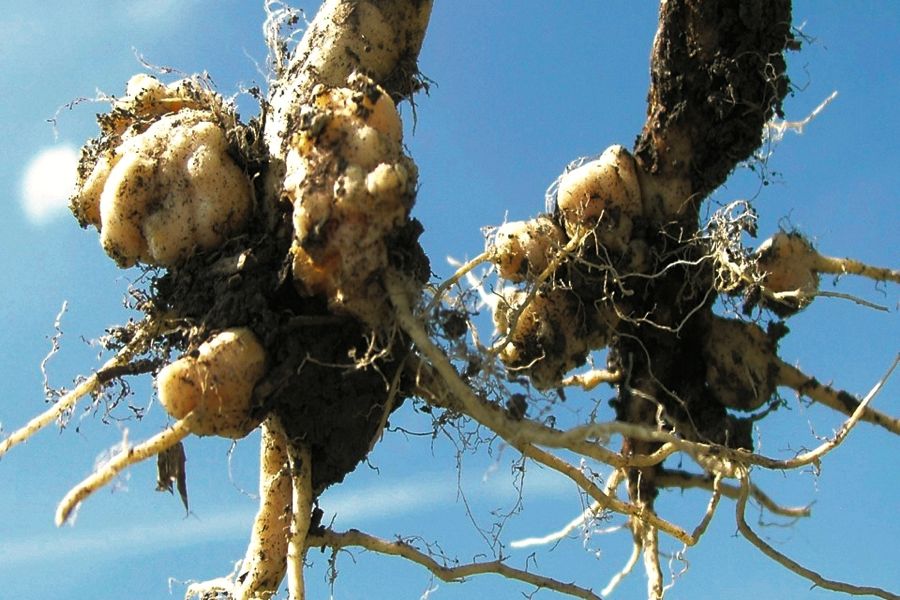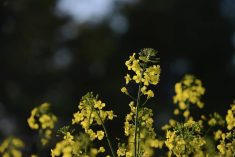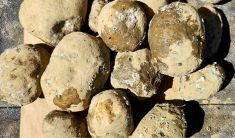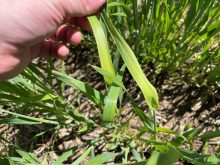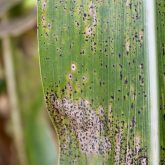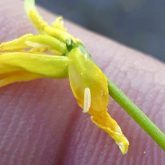Clubroot pathotypes are evolving past first-generation canola resistance, which will require new management and monitoring techniques to keep its spread in check.
“Once you have clubroot in your field, it’s pretty much there for good,” said University of Guelph professor Mary Ruth McDonald, because the resting spores have incredible soil longevity and zoospores can swim through the soil.
Why it matters: Clubroot requires a multi-faceted approach due to its survivability in soil and resistance-generating pathotypes.
Read Also

Claas brings 1000 Series SP forage harvesters to Canada
In mid-August, Claas unveiled its new line of Jaguar forage harvesters at an event in Visalia, California, deep in the heart of that state’s dairy region.
McDonald’s canola clubroot research began in 2017 after confirmation of the disease in Northern Ontario. Recent trials show new canola genes for resistance spurred pathotype changes in the organism.
“The most important change we’ve seen in pathotypes is this ability to overcome what we’re generally calling first generation resistance, that initial resistance to clubroot bred into canola,” she said.
The number of known pathotypes is expanding, McDonald added. Many 2020 samples found pathotypes capable of overcoming first-generation resistance. Fortunately, second-generation resistance canola is available.
“How do we tell which kind of pathotype is in the field? It is slow,” McDonald said.
However, Guelph post-doctoral student Afsaneh Sedaghatkish has developed a molecular method to detect the pathotypes that can overcome first-generation clubroot resistance.
Rapid molecular methods provide results in days, and further developments aim to identify pathotypes that can overcome second-generation resistance.
McDonald invited producers to submit frozen clubroot samples from assorted field locations as part of ongoing research. She said that one clubroot gall (the fibrous growth on the canola plant’s roots) holds billions of resting spores, and different and rare pathotypes can exist in one place but not another.
Wet, slightly compacted soils between 5.5 and 6.8 pH are ideal for clubroot and disease intensification. In susceptible cultivars, 100,000 spores per gram of soil provide consistent infection, but McDonald said that with high spore loads, disease severity can increase under less optimal conditions.
Using clubroot-resistant canola varieties helps keep the resting spore populations low. It also selects rare pathotypes capable of overcoming those varieties, so disease increases.
If one million resting spores per gram drop to 100,000/g, susceptibility and crop injury remain, but from 100,000 to 10,000, evidence of clubroot almost disappears.
During research trials, McDonald’s team discovered no suitable method to assess a field’s overall resting spore load.
“How you take the sample, where you take the sample, is important. If you take a sample here, move a couple of feet and take another sample, the numbers can be really different.
“We don’t have a good method to test the field and see if it’s got high spore counts or not.”
Jury’s out
Early data from a repeated freeze-thaw trial showed a relatively small (10 to 20 per cent) reduction in spore loads. Calcium or soil pH impact and cover crop trials yielded potential soil amendment insight.
“We’ve known for a long time there’s less clubroot at high pH (in the field),” McDonald said. “But it’s not always a direct relationship. We can get some clubroot even at a relatively high pH. So is it pH or the calcium put on with lime?”
The pH calcium study used three methodologies: gypsum, which adds calcium without impacting pH; potassium bicarbonate (PB), which increases pH without adding calcium; and hydrated lime, which increases pH and calcium. The test field had high calcium base saturation with a 6.4 pH.
The gypsum-PB application yielded the highest pH at 8.1, followed by 7.7. pH from PB alone. It was 7.3 with hydrated lime and showed a minimal jump to 6.5 with gypsum. Clubroot pressure remained at 100 per cent in the check and gypsum plots but dropped approximately 35 to 40 per cent with PB, gypsum/PB, and hydrated lime.
“This is nice clear reduction, but there’s still a lot of clubroot in that field,” McDonald said, adding calcium alone did not reduce clubroot.
“It’s not a 100 per cent solution; it’s one of the things that can be done to keep the levels of clubroot in the crops a bit lower.”
An eight-week trial using potted ryegrass and one using daikon radish were designed to trigger resting spores to germinate and subsequently die without a host when crops were sprayed with Roundup.
“We didn’t see any significant differences using no cover and ryegrass. There might be something happening with the daikon, but we couldn’t show the statistical difference here. We think maybe you have to grow the cover crop for more than eight weeks in the field to get the effect.”
The study did show that oilseed, white icicle, tillage and groundbreaker radish, Eco-Til daikon, barking turnip, and Winifred forage brassica are most resistant to clubroot. In contrast, some rapeseed, mustard, April cross radish, and purple top turnip are most susceptible.
Limited data from mostly Western Canada studies indicates wheat in rotation with canola can reduce resting spores faster.
“We will continue to look at pathotypes and try to identify pathotypes that can overcome first and second-generation resistance,” McDonald said. “We’re also looking for a mineral soil site not too far from Guelph.”
Because the research station’s soil is high in organic matter, McDonald is looking for a mineral soil site naturally infested with clubroot for a 2024 trial.


